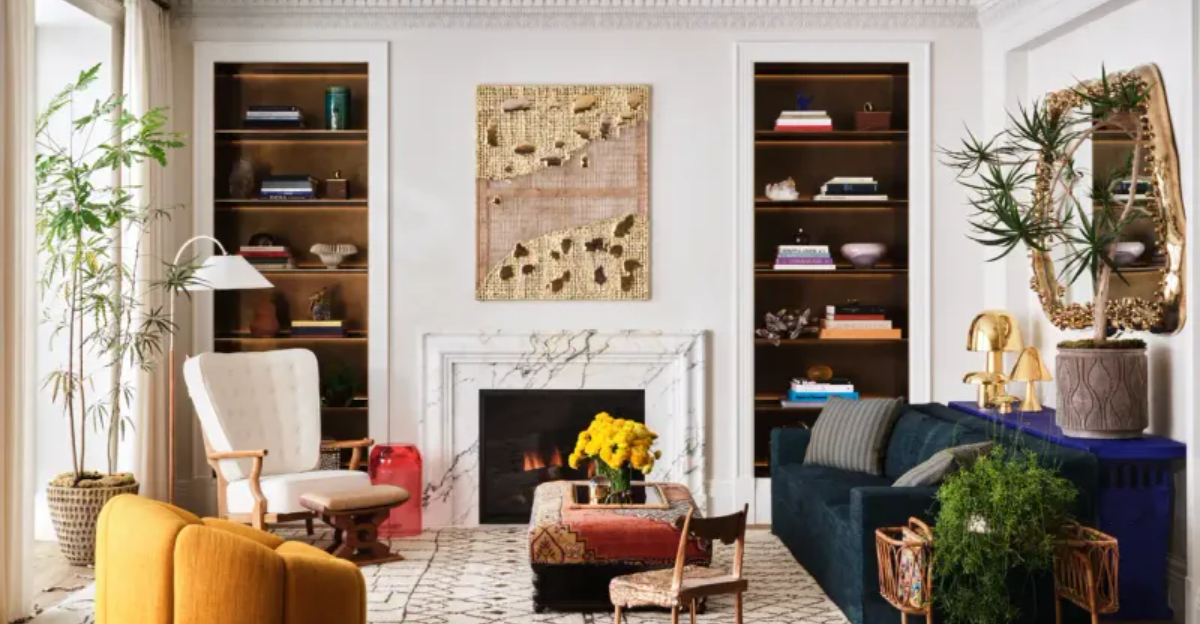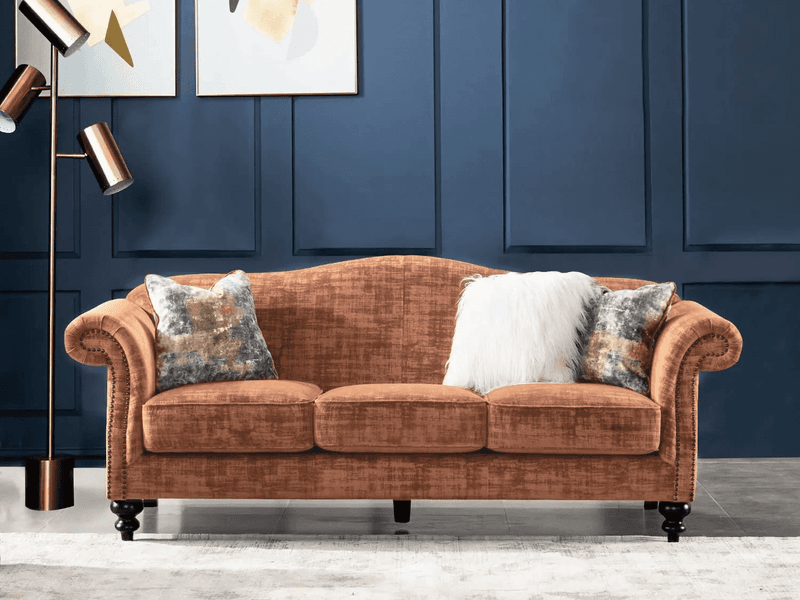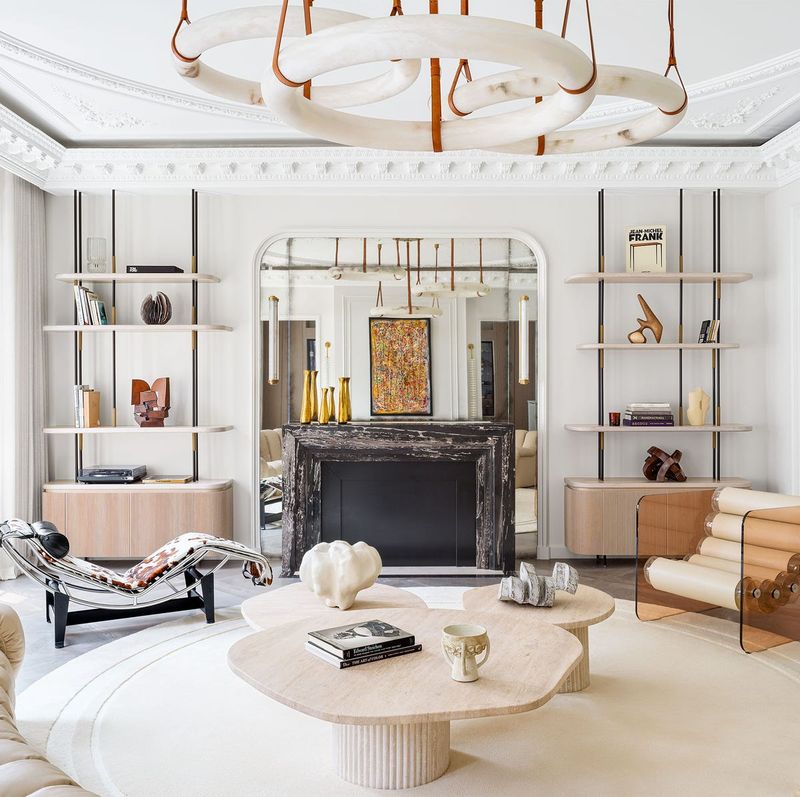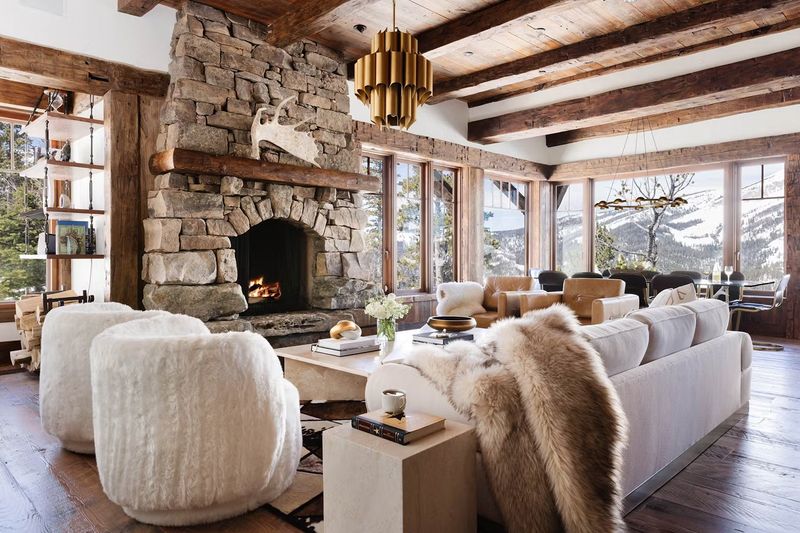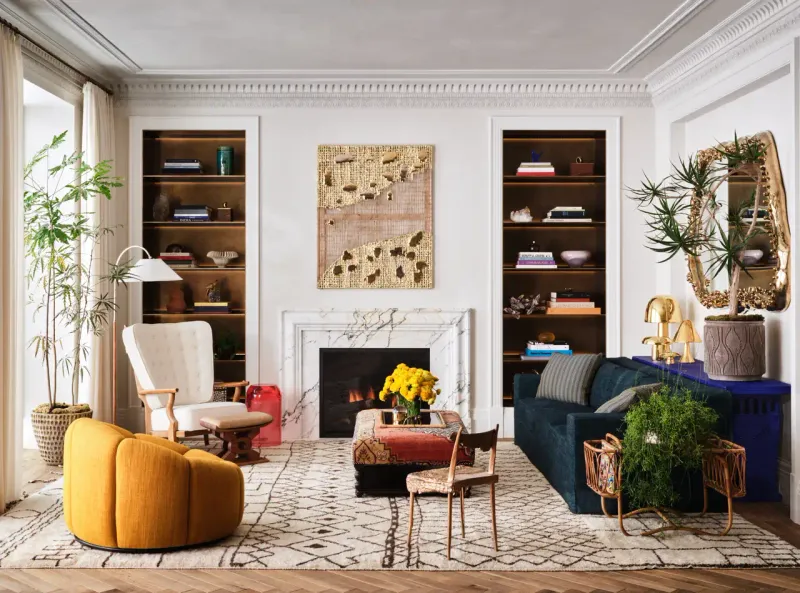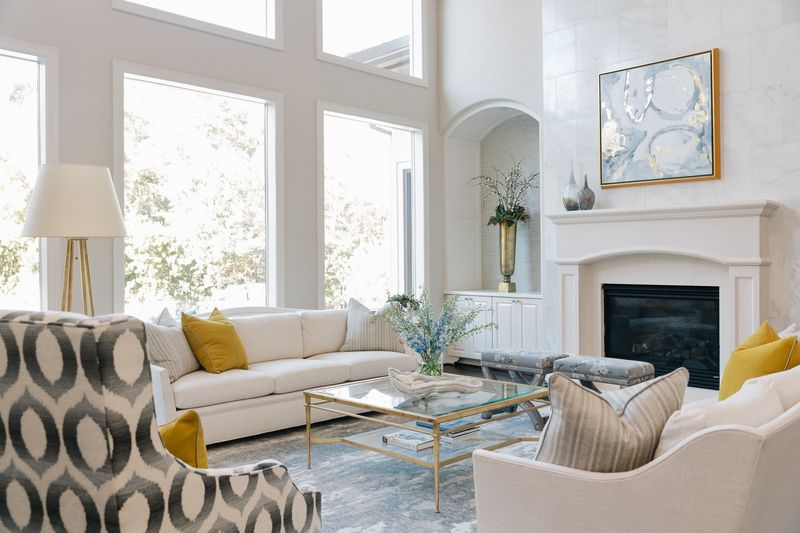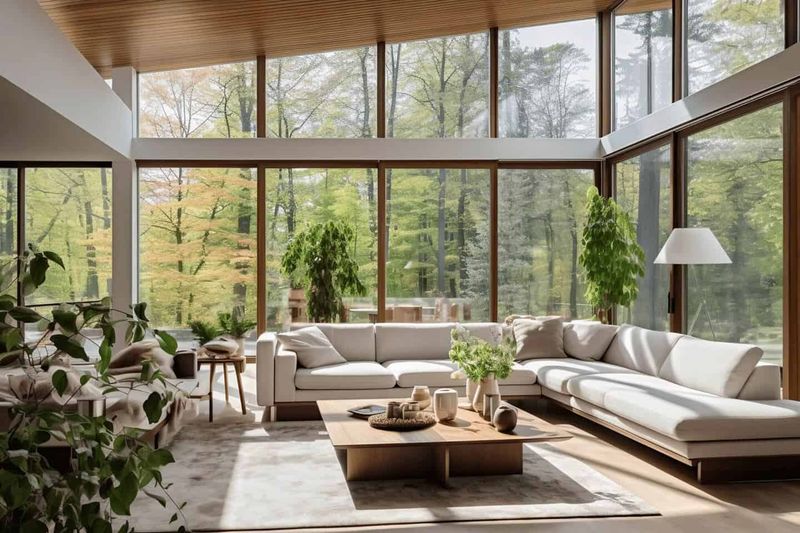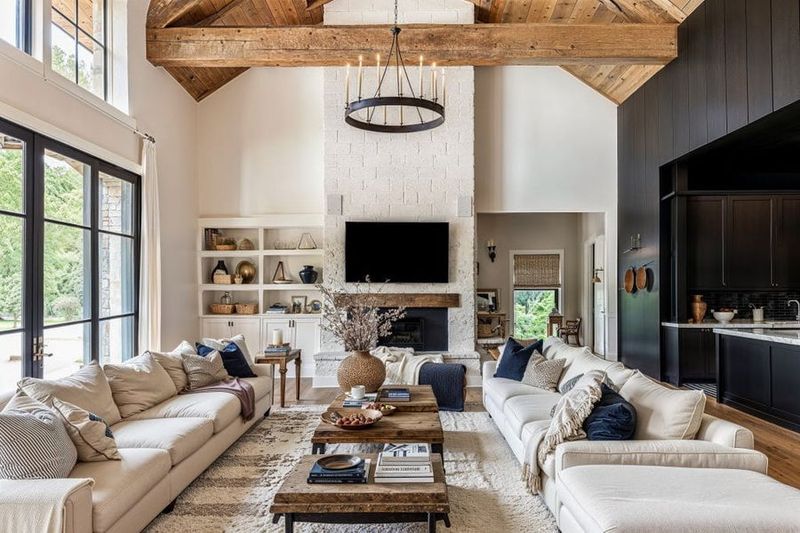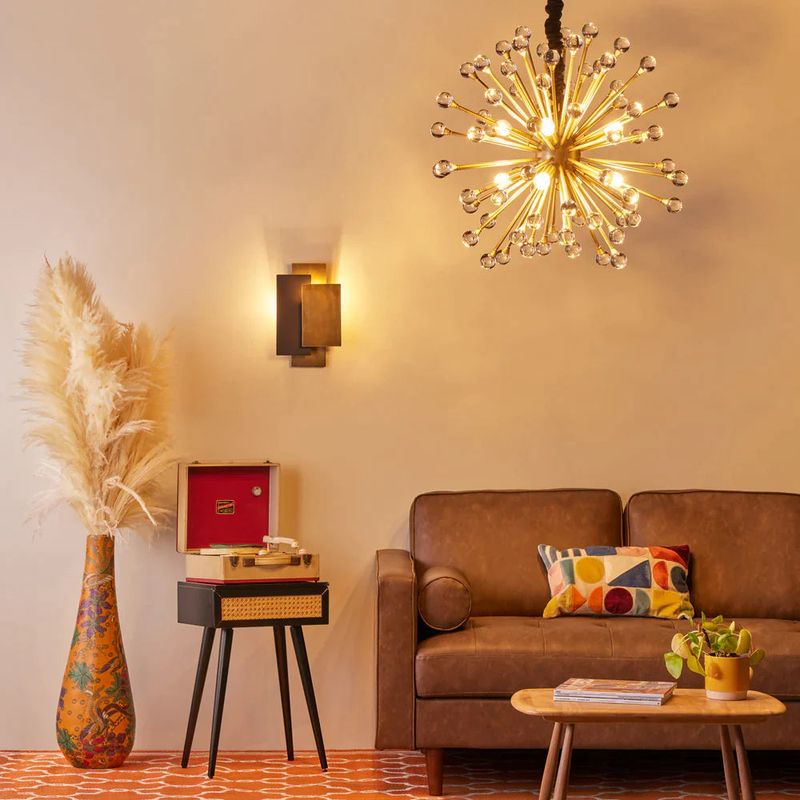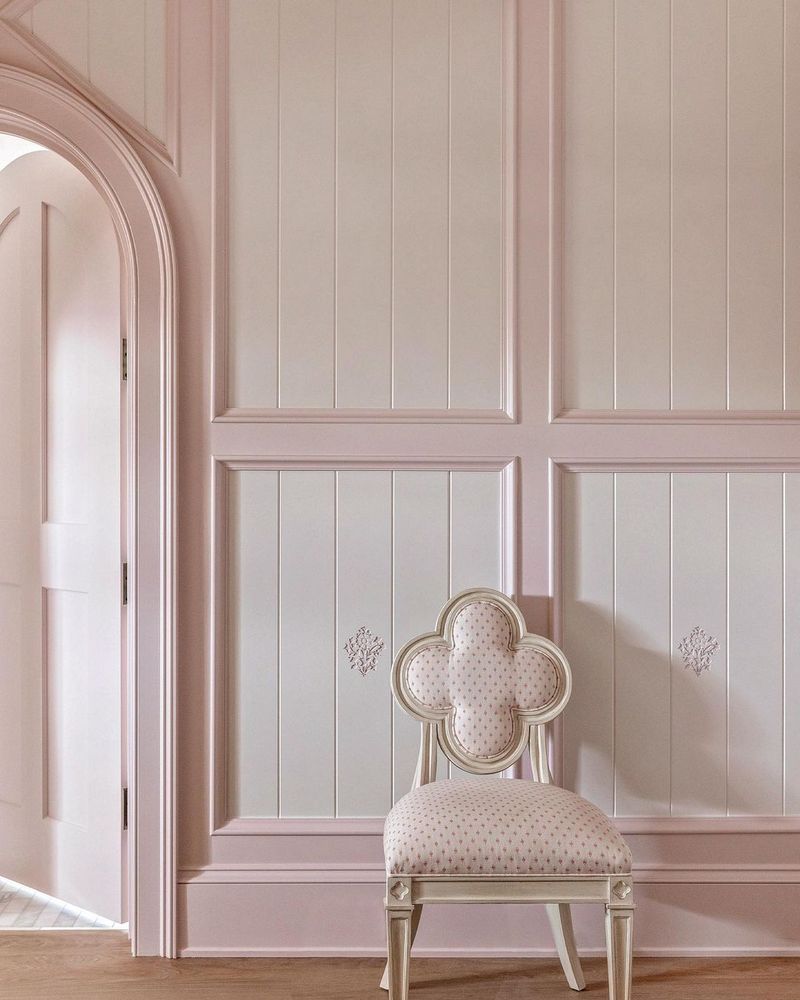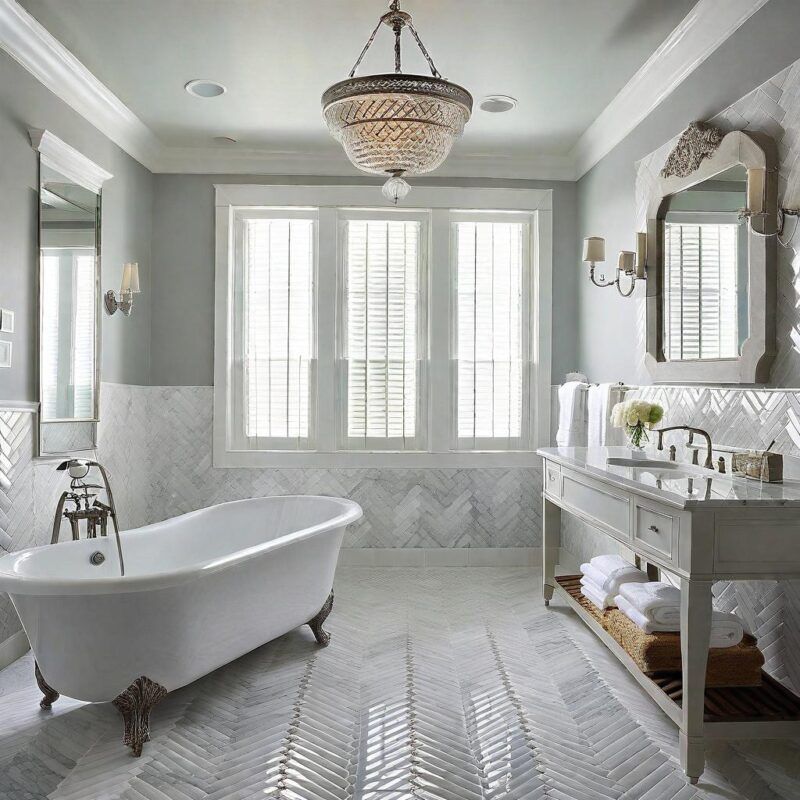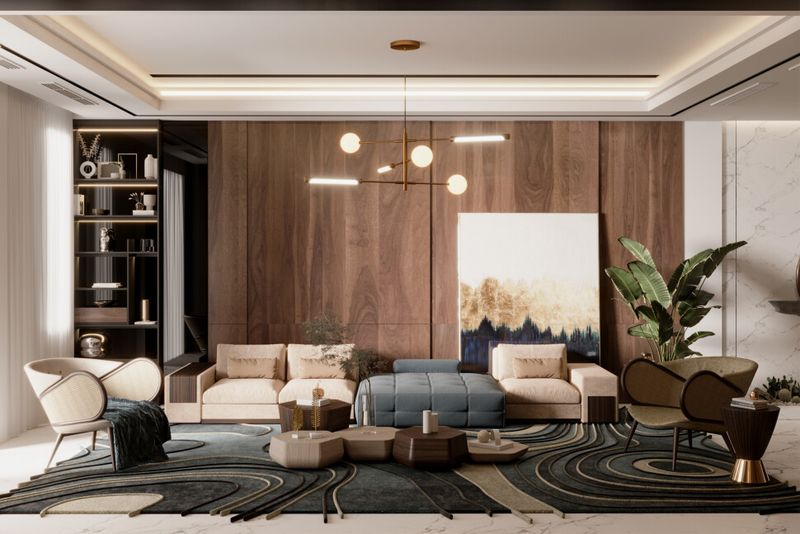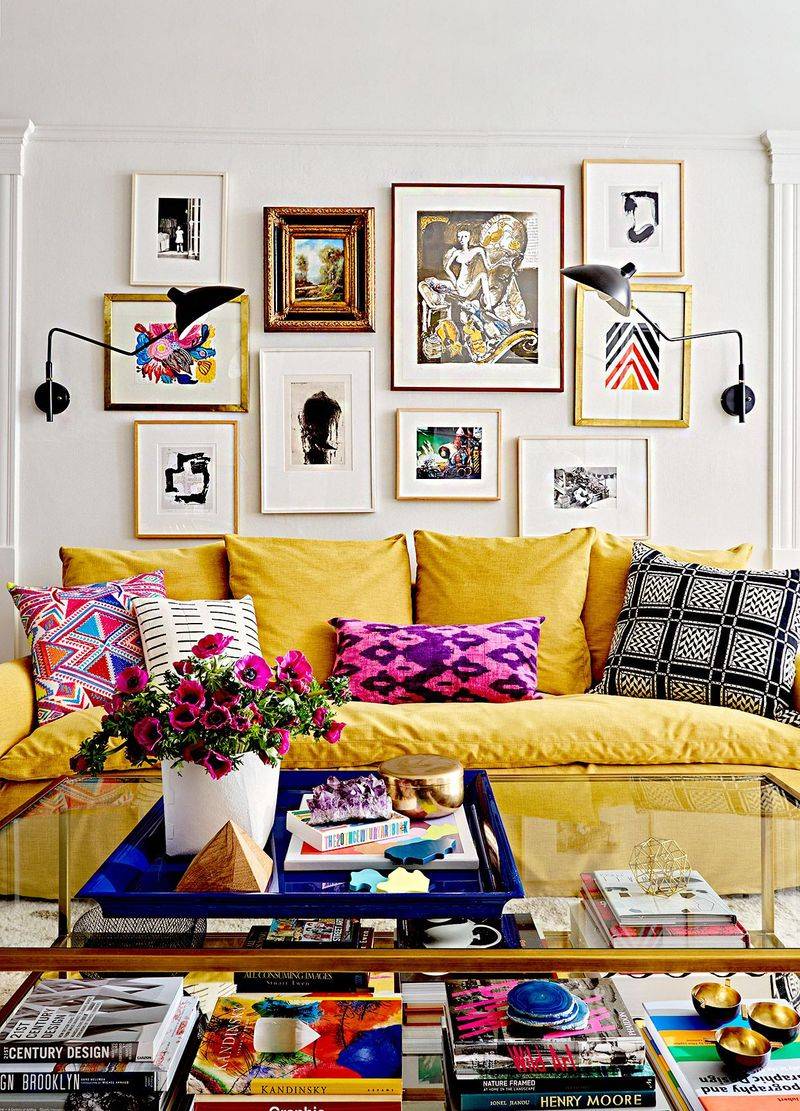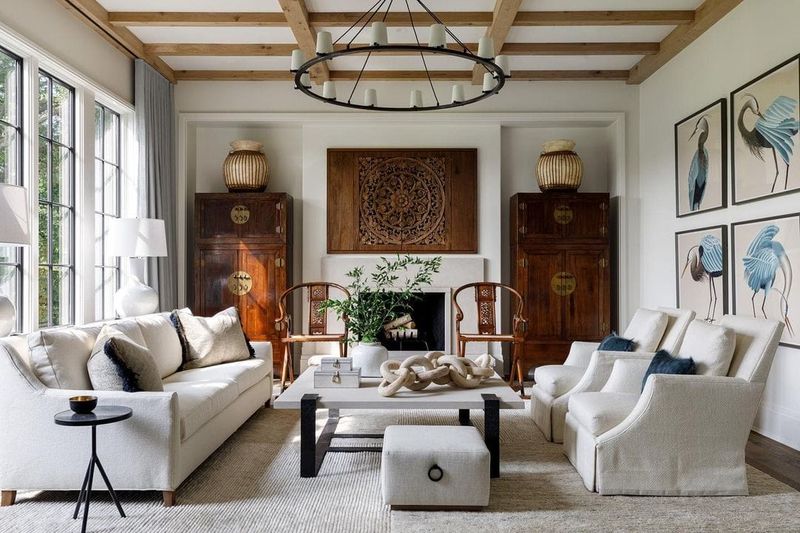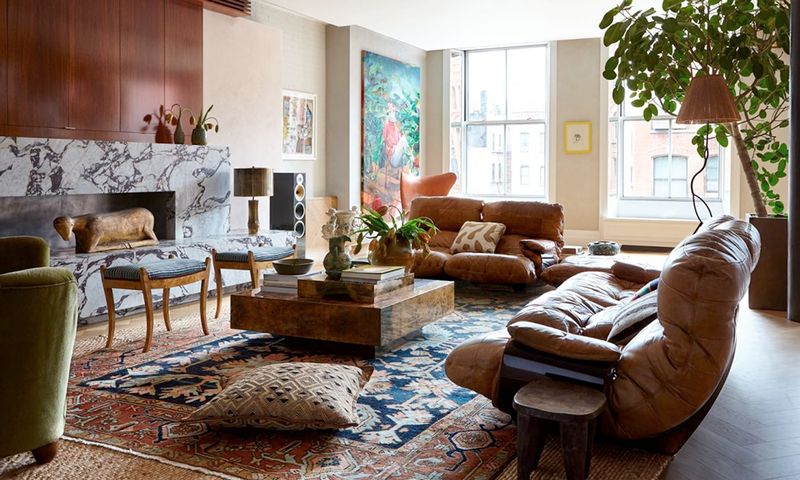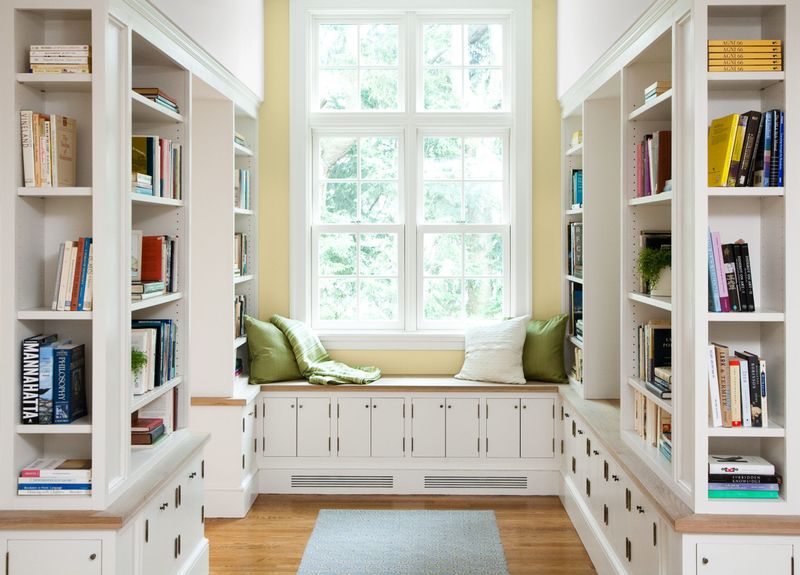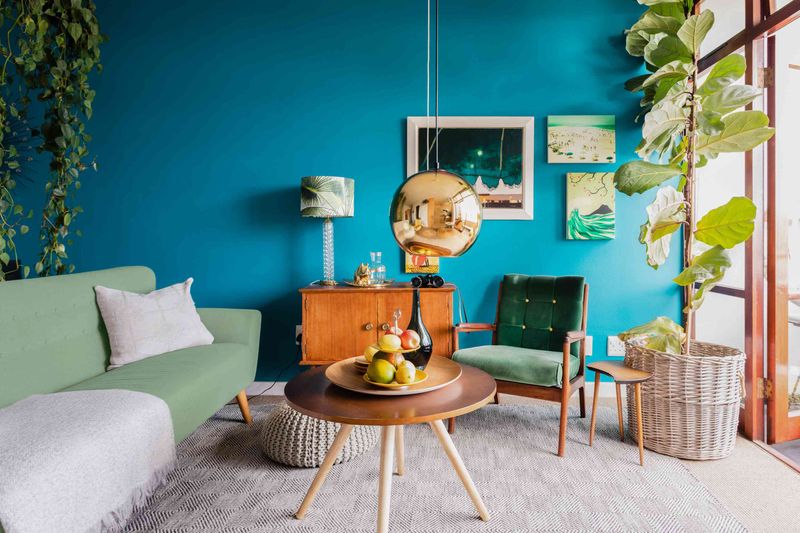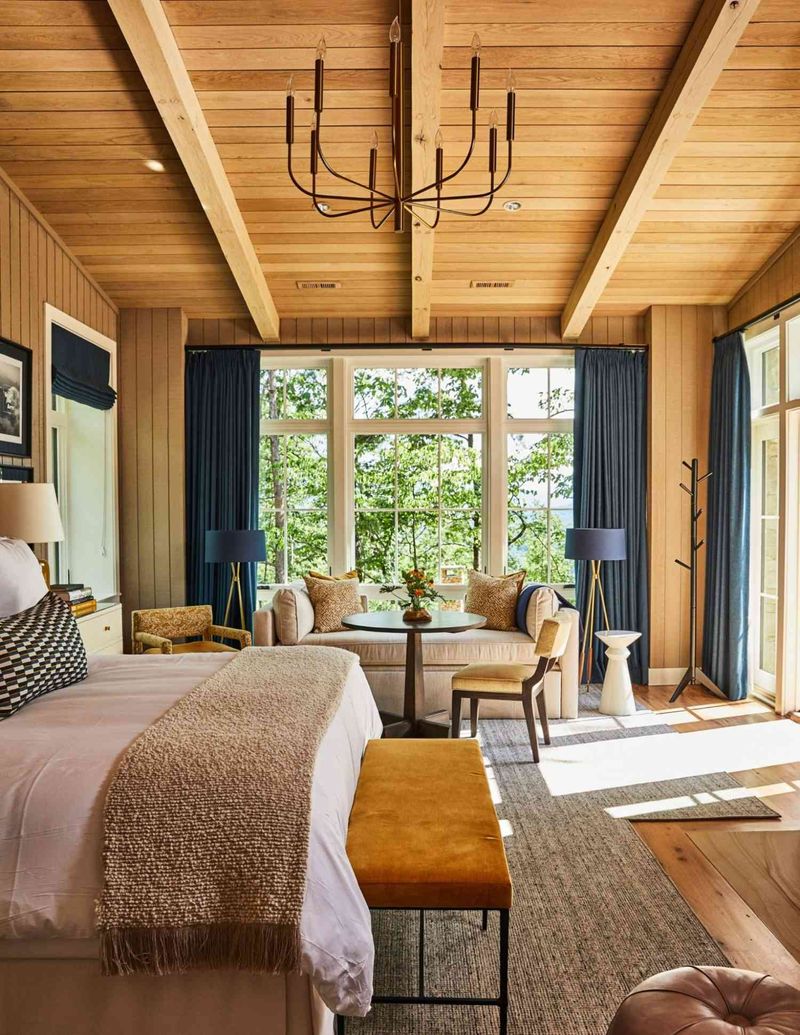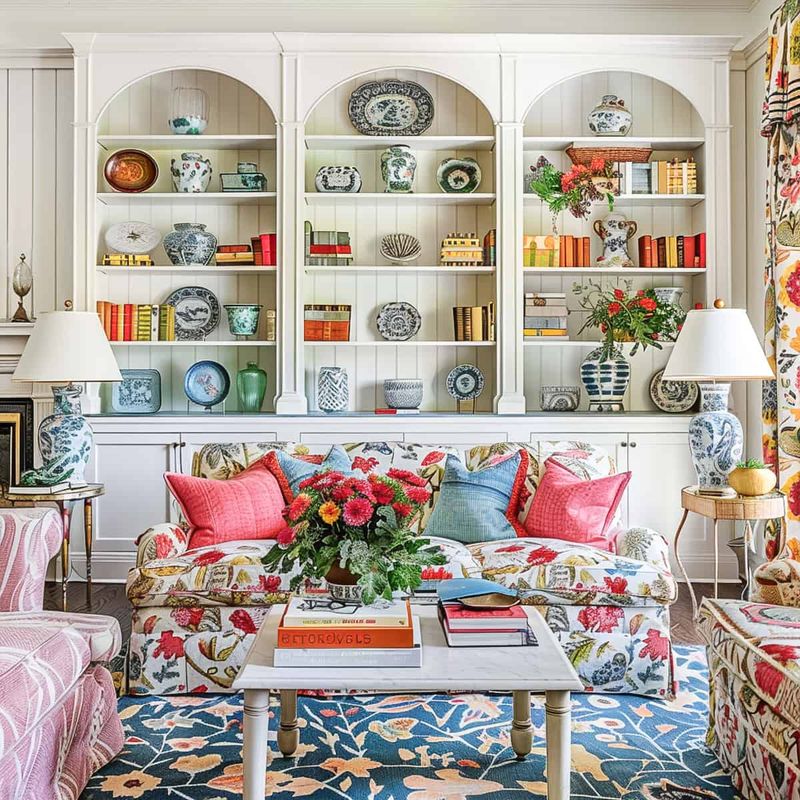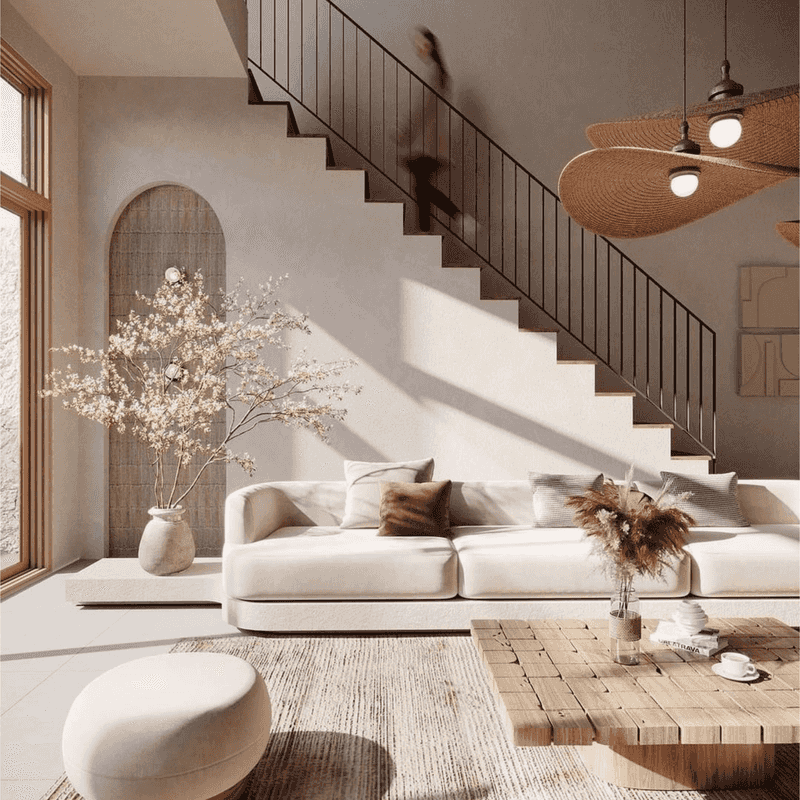Creating a home that feels truly ‘you’ isn’t just about following trends – it’s about making design choices you’ll cherish for years to come.
Interior designers know that certain decorating approaches stand the test of time while still allowing your personality to shine through.
Regardless of if you’re moving into a new space or refreshing your current home, these expert-backed decorating strategies will help you create a space that feels both timeless and personal.
1. Invest in Quality Basics
Nothing beats the long-term satisfaction of well-made furniture. Quality sofas, dining tables, and beds might cost more initially, but they’ll serve as trustworthy anchors in your home for decades.
Designers recommend focusing on classic silhouettes with proven staying power rather than trendy shapes that might feel dated within a few years. The money saved from not replacing cheaper pieces every few years actually makes quality investments more economical over time.
Look for solid wood construction, high-quality upholstery, and craftsmanship details like dovetail joints in drawers – these are telltale signs of furniture built to last through life’s many chapters.
2. Choose a Neutral Base Palette
Imagine walking into your home ten years from now and still loving the wall colors. That’s the magic of neutral backdrops – they create a timeless canvas for your evolving style journey.
Interior design veterans suggest whites, creams, soft grays, and gentle beiges for walls and large furniture pieces. These versatile hues play well with changing accent colors and shifting decorative trends without requiring complete room overhauls.
When selecting neutrals, pay attention to undertones. The best neutrals have subtle warmth or coolness that complements your home’s natural light while creating a soothing atmosphere you’ll appreciate for years.
3. Layer in Texture
Want to know the secret ingredient that makes designer homes feel so inviting? Texture adds dimension that flat color alone can’t achieve, turning ordinary rooms into sensory experiences that feel complete.
Mix rough with smooth, matte with glossy, and soft with structured. Think nubby linen curtains against sleek wooden blinds, or a chunky knit throw atop a smooth velvet sofa. These tactile contrasts create visual interest that evolves beautifully in changing light.
For lasting appeal, incorporate natural textures like wool, cotton, wood, and stone. These materials develop character over time rather than deteriorating, making your home more interesting with each passing year.
4. Curate Meaningful Art
Forget about matching your artwork to your sofa color! Seasoned decorators know that meaningful art creates the most enduring visual impact in a home, regardless of current design trends.
Seek out pieces that genuinely speak to you – whether they’re family photographs, local artists’ works, or treasures discovered during travels. The emotional connection forms a narrative that remains relevant even as your decorating style evolves over decades.
Display your collection thoughtfully rather than rushing to fill wall space. Empty walls create breathing room and anticipation for future discoveries, allowing your art collection to grow organically alongside your life experiences.
5. Mix Old and New
Have you ever noticed how the most interesting homes seem to tell a story through their furnishings? Blending vintage finds with contemporary pieces creates a collected-over-time look that never feels dated or formulaic.
Design professionals suggest incorporating at least one antique or vintage element in each room. These character pieces – whether a weathered chest, heritage mirror, or mid-century accent chair – anchor spaces with history and conversation starters.
The beauty of this approach is its flexibility. As trends shift, you can update modern elements while your timeless vintage pieces continue adding depth and personality, ensuring your home never falls victim to looking like a single-season catalog page.
6. Create Conversation Areas
Long before open floor plans became fashionable, designers understood that human connection drives great interior design. Arranging furniture to facilitate conversation creates spaces people naturally want to gather in.
The most timeless layouts position seating pieces to face each other rather than focusing solely on TV viewing. This might mean two sofas facing each other, a sectional with strategically placed accent chairs, or an intimate grouping around a coffee table.
7. Incorporate Natural Elements
Mother Nature never goes out of style! Bringing organic elements indoors creates an instant connection to the timeless beauty of the natural world, regardless of shifting design trends.
Wooden beams, stone surfaces, plants, and natural fibers ground spaces with authenticity that manufactured materials simply can’t replicate. These elements develop beautiful patinas over time, actually improving rather than deteriorating with age.
Even in the most contemporary spaces, natural touches prevent rooms from feeling sterile or cold. Consider a live-edge wood dining table, potted trees, or a striking stone fireplace surround as investment pieces that will continue delighting your senses for decades.
8. Design Around Your Lifestyle
Ever wondered why some beautifully designed homes still feel uncomfortable to live in? Function-first design ensures your space works for your actual life, not just for Instagram photos.
Before making major decorating decisions, honest lifestyle assessment is crucial. Dog owners might select performance fabrics in forgiving colors, while frequent entertainers need ample seating and accessible serving areas. These practical considerations create homes that remain livable through changing life stages.
Prioritize comfort without sacrificing style – plush cushions, proper lighting for reading, and accessible storage solutions. When your home truly supports how you live, you’ll develop a lasting attachment that transcends decorative trends.
9. Install Proper Lighting Layers
Lighting might seem purely functional, but design experts recognize it as the unsung hero of homes that feel consistently welcoming. Strategic lighting transforms spaces from flat to dimensional, highlighting architectural features and creating atmosphere.
The most timeless approach incorporates three distinct layers: ambient (general illumination), task (targeted for specific activities), and accent (highlighting art or architecture). This lighting trifecta ensures your space remains functional and flattering at any time of day.
10. Embrace Architectural Details
What’s the difference between houses that feel generic and those with lasting character? Architectural details provide the bones that make homes feel substantial and distinctive regardless of decorating styles.
Consider adding crown molding, wainscoting, ceiling medallions, or built-in shelving to create permanent interest. These classical elements have endured for centuries because they add proportion and craftsmanship that flat walls simply can’t provide.
Even in modern homes, thoughtful trim work and millwork create shadow lines and visual interest that elevate the entire space.
11. Select Timeless Patterns
Certain patterns have decorated homes for centuries without ever feeling dated – there’s wisdom in choosing these proven designs for elements you don’t plan to change frequently.
Stripes, simple geometrics, herringbone, and subtle florals have remarkable staying power compared to trendier patterns that quickly identify with specific decades. These classics work because they’re rooted in nature, architecture, and mathematics rather than fleeting fashion.
12. Create Visual Weight Balance
Walk into any designer-decorated room and you’ll sense something satisfying without immediately identifying why. The secret often lies in visual weight distribution – the artful arrangement of elements to create optical equilibrium.
Balance doesn’t mean perfect symmetry. Designers strategically place heavier visual elements (dark colors, substantial furniture) with lighter ones (airy pieces, brighter tones) to create spaces that feel grounded yet dynamic. This approach prevents rooms from feeling top-heavy or lopsided.
13. Personalize with Meaningful Collections
Could your home belong to anyone, or does it tell your unique story? The most soulful interiors showcase personal collections that reflect the inhabitant’s passions, travels, and memories.
Rather than purchasing generic decorative objects, design professionals suggest displaying items with personal significance – whether vintage cameras, handcrafted pottery, or shells collected from favorite beaches.
When thoughtfully arranged, these meaningful groupings become conversation starters and visual anchors.
14. Pay Attention to Scale and Proportion
Ever walked into a room that just feels “off” somehow? Improper scale is often the culprit behind spaces that never quite feel right, regardless of beautiful furnishings or color schemes.
Design veterans emphasize that proportion – the relationship between objects’ sizes – creates visual harmony that registers subconsciously. Oversized furniture in small rooms feels cramped, while petite pieces in large spaces appear lost and disconnected.
15. Add Character with Vintage Textiles
Looking for instant soul in a new space? Vintage textiles carry historical richness that factory-fresh fabrics simply can’t replicate, adding depth that makes rooms feel authentically evolved.
Antique rugs, hand-embroidered pillows, and heritage linens bring craftsmanship and patina that contrast beautifully with newer elements. Their imperfections tell stories of human hands and passing time – precisely what makes them impossible to duplicate.
Unlike fragile antique furniture, textiles can often be incorporated into active family living. A vintage kilim rug in a high-traffic area develops beautiful wear patterns, while antique table linens bring specialness to ordinary family dinners, creating lasting connections between daily life and design history.
16. Incorporate Statement Millwork
Imagine the architectural elements that make historic homes feel substantial and distinctive. Custom millwork creates that same enduring character in any home, regardless of age or architectural style.
Built-in bookshelves, window seats, coffered ceilings, and custom cabinetry transform ordinary rooms into personalized spaces with architectural significance. Unlike furniture that comes and goes, these permanent improvements become part of your home’s structural identity.
17. Design Around Statement Art
Stuck in a decorating rut? Professional designers often start with a single exceptional piece – whether a painting, sculpture, or textile – and build the entire room’s palette and personality around it.
This approach creates spaces with natural focal points and cohesive color stories that feel intentional rather than haphazard. When your palette derives from artwork you love, the resulting combinations have inherent harmony that commercial color schemes often lack.
Select your most meaningful, conversation-starting piece and identify 3-5 colors within it to incorporate throughout the room. This creates a visual through-line that connects everything from upholstery to accessories, ensuring your space feels curated rather than collected randomly.
18. Install Proper Window Treatments
Window coverings might seem like mere afterthoughts, but design professionals recognize them as room-defining elements that dramatically impact how spaces feel both day and night.
For timeless appeal, mount curtains close to the ceiling rather than directly above window frames – this simple adjustment visually heightens ceilings and creates architectural presence.
Ensure panels extend fully to the floor (or with a slight “break” for luxurious pooling) to avoid the awkward, truncated look of too-short curtains.
19. Create Depth with Layered Styling
What’s the difference between catalog-perfect rooms and those with genuine personality? Thoughtful layering transforms flat, one-dimensional spaces into visually rich environments that reveal themselves gradually rather than all at once.
Master this technique by arranging objects at varying heights, depths, and scales. On bookshelves, place some items forward while recessing others. On tables, group objects in odd numbers with contrasting heights and textures rather than lining them up uniformly.
20. Prioritize Quality Over Quantity
Surrounded by too much stuff? The most enduring interiors share a common quality – thoughtful curation rather than excessive accumulation. This “less but better” philosophy creates spaces with breathing room and visual impact.
Rather than filling every surface, select fewer, more significant pieces that truly resonate with you. A single exceptional vase makes a stronger statement than a collection of mediocre accessories, while providing negative space that allows eyes to rest between focal points.
Apply this mindset when shopping by asking if each potential purchase is something you’d repair rather than replace if damaged. This simple test reveals which items hold lasting value versus momentary appeal, helping create homes filled only with things worthy of long-term love.

